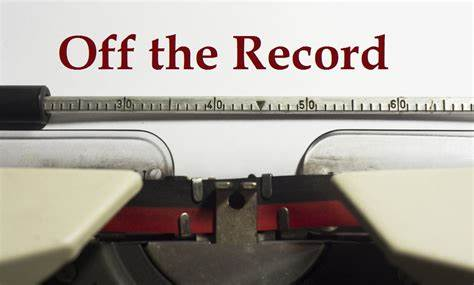In the world of journalism, confidentiality plays a huge role. In certain situations, sources may wish to remain anonymous, meaning that their identity remains a mystery to the story that the journalist is working on. This can occur due to a number of reasons.
The source may fear retaliation to their personal safety or to their loved ones. Journalists are legally bound to protect the identity of their sources, and there are special laws that help enforce this.
Confidentiality is central to journalism, and it's vitally important that it's protected by the law.
The idea of having
confidential sources is a bit controversial. Some people believe that anonymous sources diminishes the credibility of the journalists' reporting.
When it comes to legal proceedings, it can become tricky if the journalist refuses to give up their source's identity. Some people find this difficult to navigate and that it puts a hold on the justice system.
Regardless of negative opinions on anonymous sources, they have played prominent roles in the history of journalism.
One of the most notable and famous anonymous sources is tied to the Watergate Scandal in 1972.
An anonymous whistleblower by the name of "Deep Throat" leaked information to reporters Bob Woodward and Carl Bernstein, two young reporters at "The Washington Post", in regards to the truth about the Watergate break-in.
Deep Throat exposed secret White House recordings of President Nixon revealing his involvement with the scandal, which prompted Woodward and Bernstein to begin a long road of investigative journalism to unveil the truth of Watergate.
Bob Woodward and Carl Bernstein
Woodward and Bernstein were successful in their reporting, and it won them a Pulitzer in 1973. Woodward and Bernstein went on to write the best-selling book "
All The President's Men", which also earned them awards and national attention.
In 1976, their book was turned into a
hit cinematic film starring Robert Redford as Woodward and Dustin Hoffman as Bernstein. The film's real-life plot was described as "the most devastating detective story of this century."
The identity of "Deep Throat" remained a mystery until 2005, when former FBI assistant director
Mark Felt revealed himself to be the person behind Deep Throat. Felt went to great lengths to hide his identity, and despite Woodward and Bernstein's promise to keep him anonymous, Felt came up with ways to stay under the radar. Felt and Woodward met in secret locations and created a set of signals to communicate.
This shows the importance of journalists keeping their word to anonymous sources. If Woodward or Bernstein had given Felt up, the entire investigation would've been blown, and there's no telling what kind of consequences Felt would have faced. Felt passed away in 2008 at the age of 95, leaving behind one of the greatest anonymous source success stories.
Mark Felt AKA "Deep Throat"
When it comes to the legal protection of confidential sources, there are state laws put into place.
These are called shield laws.
In the United States, shield laws protect journalists against the disclosure of confidential information...this includes the identity of their sources.
This term is referred to as "reporter's privilege"
There isn't a federal shield law, meaning that not every state is protected. The details vary by state, and despite attempts to create a federal law, it hasn't been successful.
The Free Flow of Information Act is a bill intended to provide this kind of protection to all 50 states in the United States.
The bill has been presented to Congress, but it has yet to make it through and made into federal law.
Essentially, this would allow all U.S. journalists to have the right to refuse to disclose any confidential information or sources.
When it comes to interviews and using sources/information, there are layers to what can be used and what can't.
When most people think of a journalistic interview, they think of an "on the record" interview. This means that the source's identity and any information/direct quotes that are shared can be used in the story.
Then there are some middle ground interviews such as "on background" and "on deep background".
"On background" establishes that a source's information and direct quotes can be used, however, their real name cannot be identified. Usually the reporter will use a general title or a fake name.
"On deep background" means that the source's information can be used, but they cannot be directly quoted or named in any way.
Finally, there are "off the record" interviews which strictly prohibit the source's name, information and direct quotes from being used. With "off the record" sources, the reporter can only use the information that was given to go find other information and sources.
Confidentiality and anonymity is crucial to journalism, particularly investigative journalism. As we saw with the Watergate Scandal, the anonymous identity of "Deep Throat" was a huge part in the success of Woodward and Bernstein's investigating and reporting.
We as journalists have a duty to protect our sources, and it's important to the stories that need to be told.


















